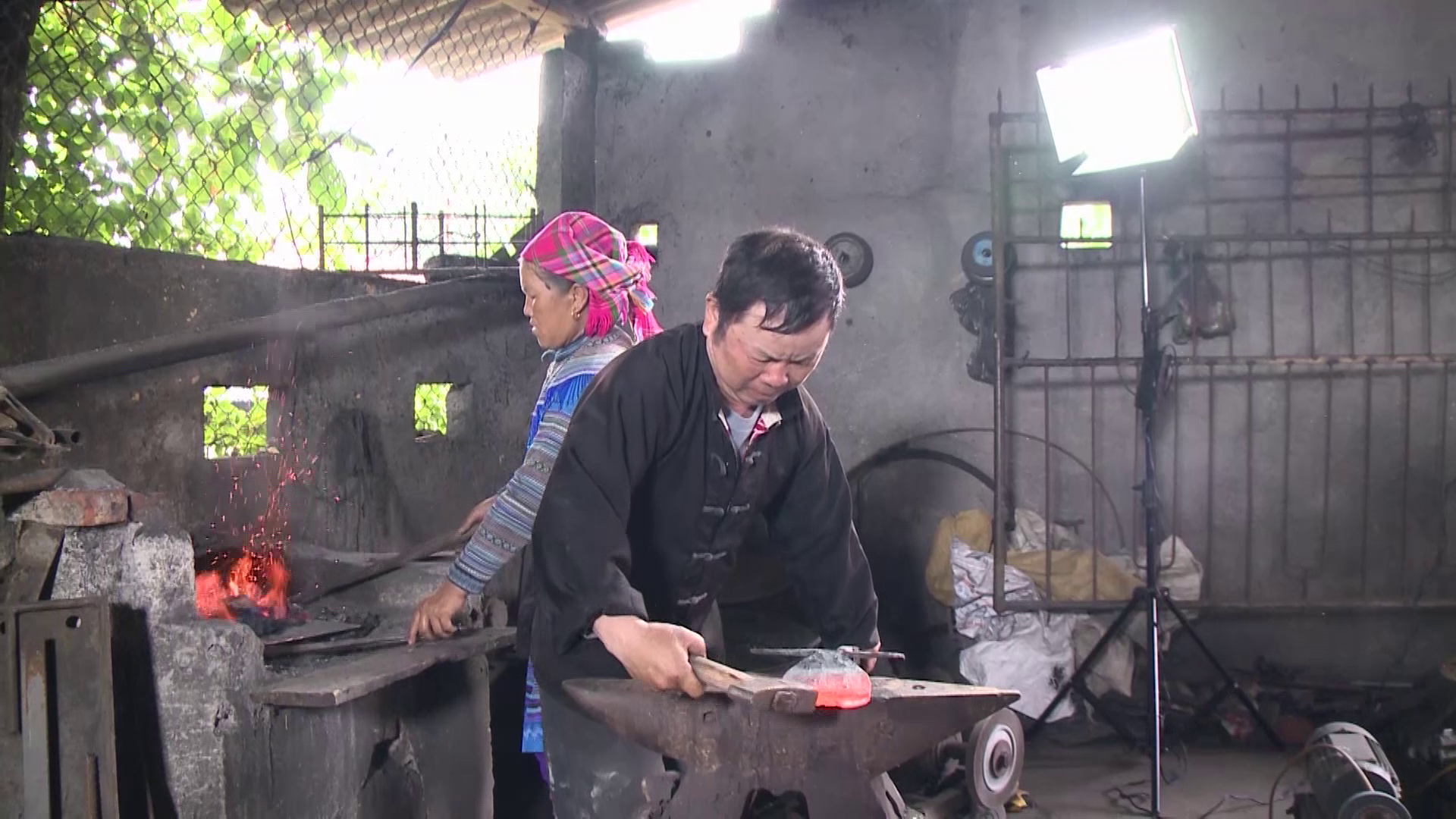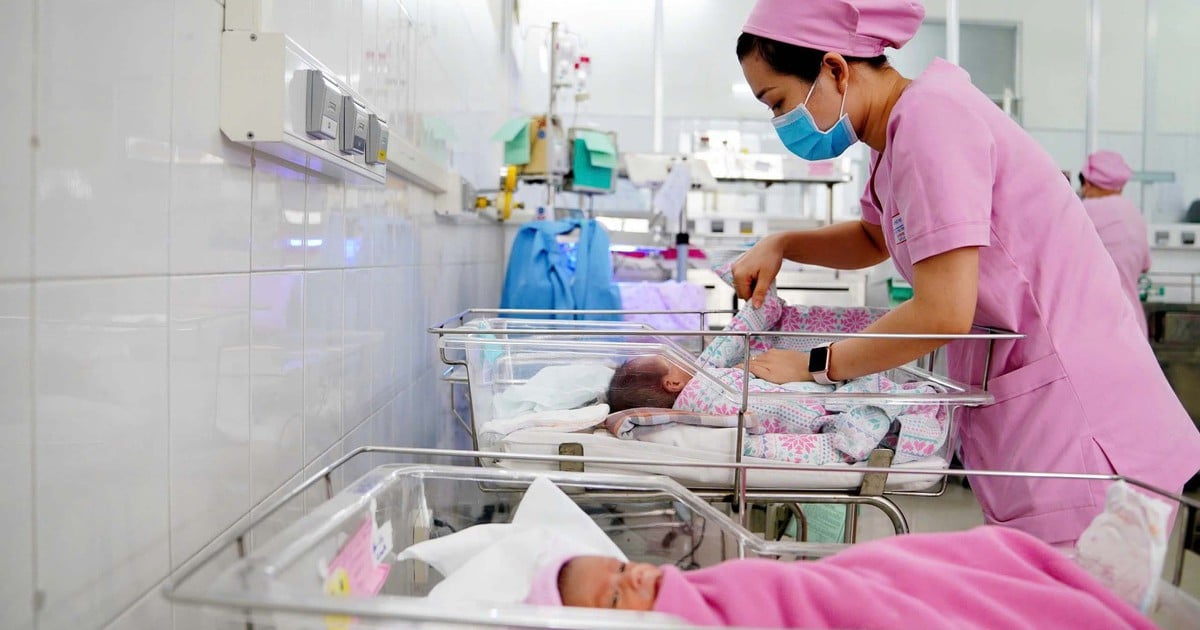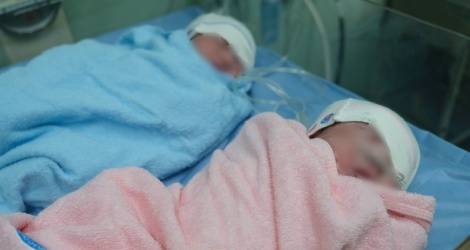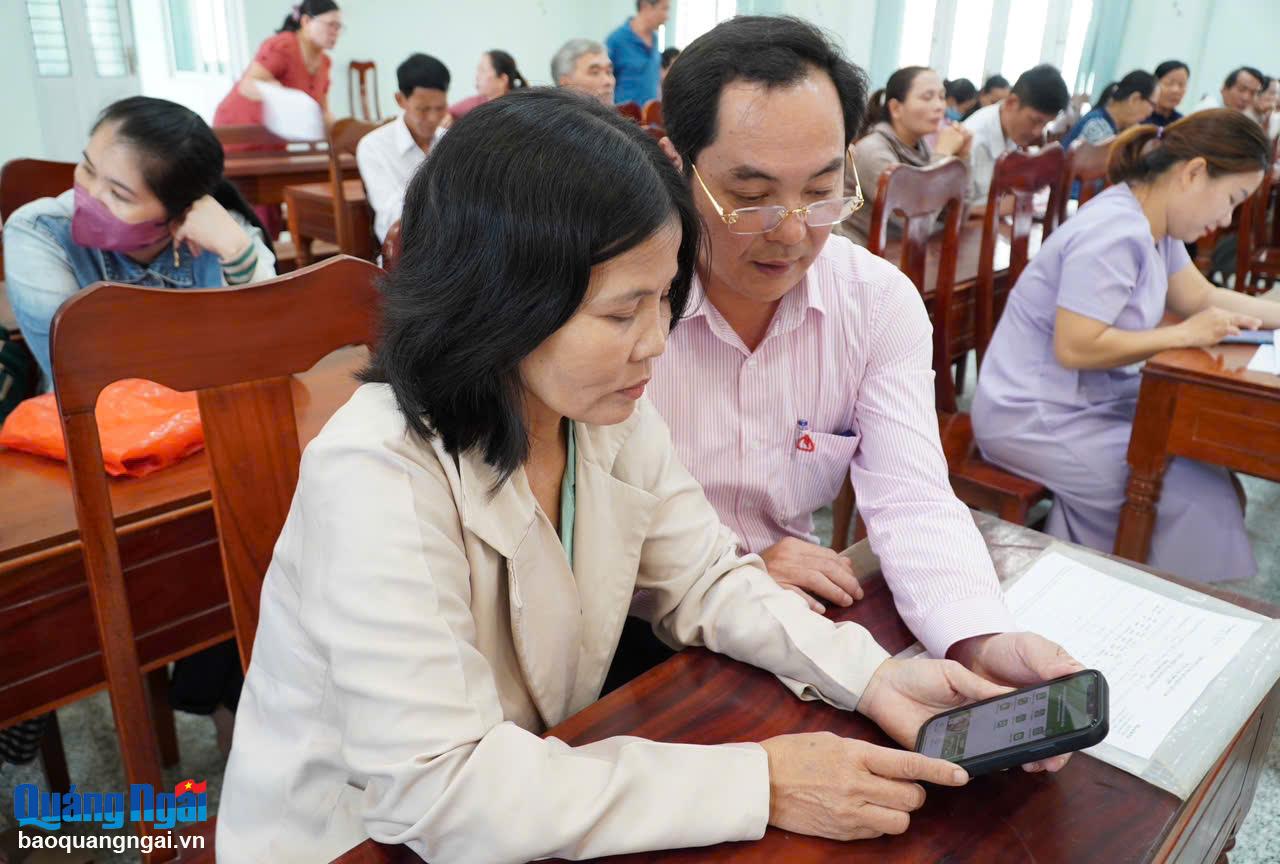Currently, Vietnam is recording a sharp decline in fertility. In 2023, the estimated fertility rate is 1.96 children per woman, the lowest in the past 12 years and is forecast to continue to decrease in the following years.
If in 2009, for every 3 children under 15 years old, there was 1 person aged 60 or older, then in 2019, for every 2 children under 15 years old, there was 1 person aged 60 or older.
 |
| Currently, Vietnam is recording a sharp decline in fertility. In 2023, the estimated fertility rate is 1.96 children per woman, the lowest in the past 12 years and is forecast to continue to decrease in the following years. |
The change in numbers after 10 years shows that Vietnam is at risk of not achieving the goal of maintaining replacement fertility nationwide; the population is aging rapidly and will soon become an aging country.
Currently, Vietnam is recording a sharp decline in fertility. In 2023, the estimated fertility rate is 1.96 children per woman, the lowest in the past 12 years and is forecast to continue to decrease in the following years.
Typically in Ho Chi Minh City, the birth rate has dropped significantly from 1.42 children per woman last year to 1.32 children this year. The average age of first marriage in the city reached 30.4, a national record.
It can be seen that in the current period, Vietnam's population work is facing many challenges. Among them, it is worth mentioning the difference in birth rate and the trend of decreasing birth rate, leading to difficulty in achieving the goal of maintaining replacement birth rate.
Therefore, the proposal to give couples and individuals the right to decide on the time of giving birth, the number of children and the spacing between births, which the Ministry of Health proposed in the proposal to develop the Population Law, is considered a turning point after a long period of Vietnam implementing family planning.
According to experts, if the birth policy is relaxed as proposed by the Ministry of Health, it can help the birth rate increase again and the total birth rate can reach 2.3-2.5 children/woman, then by 2050, Vietnam's population will reach 130 to 140 million people.
In addition, the Vietnam Association of Realtors (VARS) has just proposed prioritizing one-time support when buying social housing for couples with two children to improve the low birth rate.
VARS said that rising housing prices contribute to the trend of many young people choosing to live without marriage, without having children or choosing a "double income, no kids" lifestyle.
In addition to the policy of giving priority to social housing for couples who have two children, VARS experts also proposed that the State study an intervention policy to develop affordable commercial housing - the key to solving the problem of reluctance to get married and lazy to have children. This segment will be developed by enterprises, based on a reasonable profit level controlled by the State.
With this proposal, according to Professor Nguyen Dinh Cu, former director of the Institute of Population and Social Issues, National Economics University, the number one key solution today is to communicate and change the mindset of population policy. Because population policy from 1956 to now has been to communicate a reduction in births, with each couple having two children.
At this time, Vietnam's population policy needs a turning point to maintain the replacement fertility rate of 2 children/woman by amending the previous fertility reduction policy to suit the current reality. Next is to develop services to support young families. Because now both parents go to work while the nursery school finishes at 4:30 p.m. and the parents finish work at 5 p.m., who will pick up the children?
In addition, the weak and inadequate nursery system makes it difficult to support young families. In addition, some support and incentives are needed in low birth rate areas such as supporting women to raise children, returning to work after giving birth, supporting young families to buy social housing or rent housing, and supporting education costs.
In many developed countries, governments have introduced a series of measures to encourage young people to get married and increase the birth rate. In addition to welfare policies, most other incentives are cash subsidies for renting and buying houses.
For example, Japan supports newly married couples with 600,000 yen (equivalent to more than 130 million VND) to cover the cost of buying/renting a new house, deposit, key money, regular service fees, brokerage fees, etc.
In Busan City (South Korea), newlywed couples will also receive 30 million won (about 550 million VND) for a deposit to buy a house or 800,000 won (more than 14 million VND) per month in rent subsidies for 5 years.
In the country with the highest housing prices in Asia - Singapore, young couples can receive housing subsidies of up to 80,000 SGD (about 1.5 billion VND). First-time home buyers, young couples or families with children, will be given priority when buying a new apartment.
To ensure social security and support young couples in childcare, a priority policy for purchasing social housing is essential because this is the group that needs the most assistance.
According to former Minister of Education and Training Nguyen Thien Nhan, for each family to be able to have 2 children, the income of 2 working people in a family must be able to support 4 people (2 adults, 2 children).
The government, businesses and workers (unions) need to unify their awareness and solutions so that families with 2 working members have enough income to raise and educate their 2 children properly. Professor Nhan recommends that it is necessary to change from the minimum wage regulation to a minimum living wage regulation for a family of 4.
Solutions need to be comprehensive, with the housing market being competitive, supported and supervised by the state so that workers can rent or buy houses at acceptable prices; so that housing does not become a condition for marriage.
Working conditions, maternity benefits, salary and promotion in enterprises must encourage marriage and childbearing, and not create conflicts between work and family and having children.
In addition, according to Professor Nhan, it is necessary to universalize preschool education (for children from 3 months to 5 years old) so that parents have the conditions to work and develop even after giving birth, when their children are still young. Develop the public and non-public education system to universalize primary, secondary and vocational education.
Source: https://baodautu.vn/de-xuat-cac-giai-phap-tang-muc-sinh-tai-viet-nam-d222293.html



![[Photo] Prime Minister Pham Minh Chinh receives Mr. Jefferey Perlman, CEO of Warburg Pincus Group (USA)](https://vstatic.vietnam.vn/vietnam/resource/IMAGE/2025/4/18/c37781eeb50342f09d8fe6841db2426c)


![[UPDATE] April 30th parade rehearsal on Le Duan street in front of Independence Palace](https://vstatic.vietnam.vn/vietnam/resource/IMAGE/2025/4/18/8f2604c6bc5648d4b918bd6867d08396)











![[Video] Ministry of Industry and Trade requires strict inspection of fake food, milk and medicine](https://vstatic.vietnam.vn/vietnam/resource/IMAGE/2025/4/19/190da04a17a343c79822b86326c48b4f)



![[Video] Doctors, pharmacists, and medical staff are not allowed to advertise functional foods.](https://vstatic.vietnam.vn/vietnam/resource/IMAGE/2025/4/19/f08666d51bdb40a495cc27e0ba1bbbfc)













































































Comment (0)